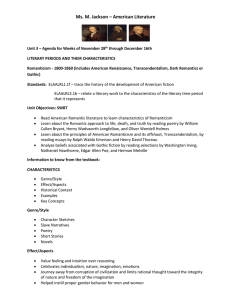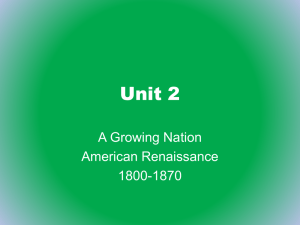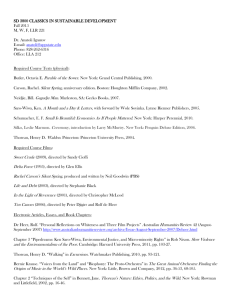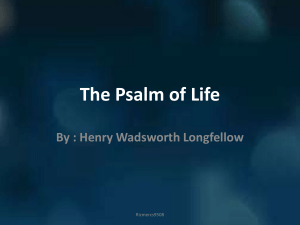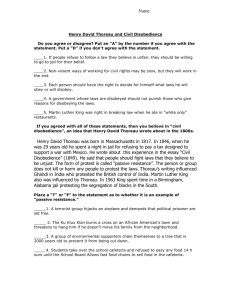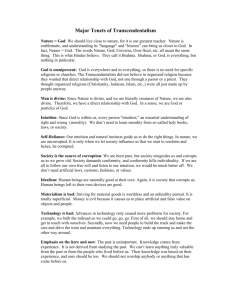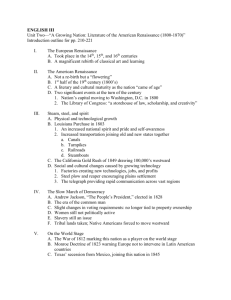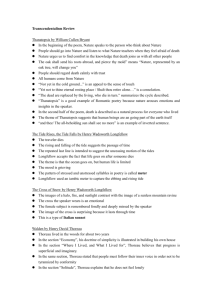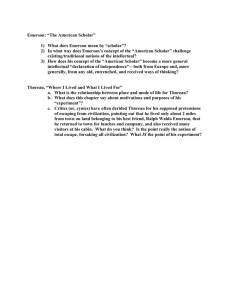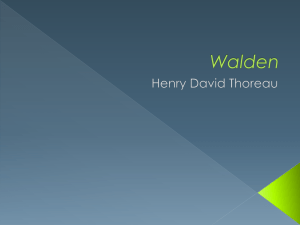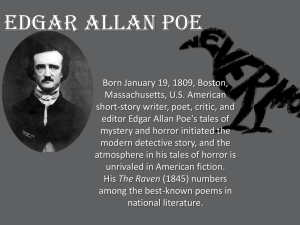The American Renaissance (1800
advertisement
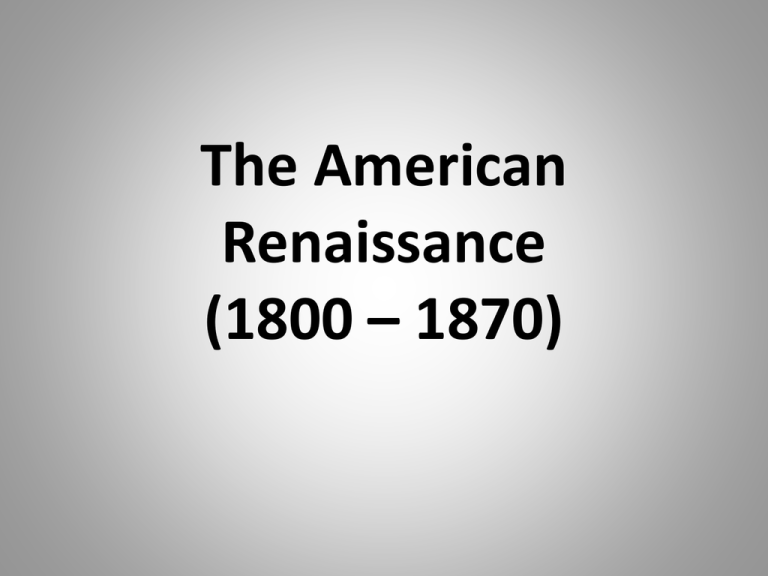
The American Renaissance (1800 – 1870) • European Renaissance (rebirth of arts and learning): 14th, 15th,and 16th century • American Renaissance (not a “rebirth” but a first flowering): first half of 19th century) • Two major events: 1. capital moved to Washington, D.C. 2. foundation of the Library of Congress (first cultural institution in the capital) Events… • Thomas Jefferson – Louisiana Purchase of 1803 (doubled the territory of the US) • Improved transportation: canals, turnpikes, railroads, steamboats • California became US territory (1848) • Gold Rush of 1849 • New industries, new kinds of jobs (more productive farming) • Telegraph – improved communication across the US Politics • 1828 – Andrew Jackson - “The People’s President” • The “era of the common man” – no more property requirement for voting • Only white males allowed to vote • Little attention paid to women • African-Americans still enslaved • Native Americans – tribal lands confiscated; forced to move to the West • Texas becomes territory of the US (1845) • Conflict over slavery leads to civil war What is the relationship between place (property) and literature? • • • • • • Vast land: open prairies in the Midwest deserts in the SE immense forests in the NW great canyons and mountains in the W Oceans on both sides Countless natural resources (Cont.) • Spirit of acquisition, pride of ownership • Exploration led to exploitation • Limitless possibilities Literature: • Explorers recorded facts of their expeditions in colorful words and drawings • Fiction writers (Washington Irving, James Fenimore Cooper) - created an American mythology by setting stories in forests and towns of the American landscape • Henry Wadsworth Longfellow – narrative poems : colonial Americans, Native Americans, and Revolutionary War heroes within the American wilderness The American Masters • Edgar Allan Poe, Nathaniel Hawthorne, Herman Melville – dark side of wilderness • Transcendentalists: Ralph Emerson, Henry D. Thoreau – emphasized nature’s sublimity How does literature shape or reflect society? • Harriet Beecher Stowe - antislavery novel “Uncle Tom’s Cabin” (national and international phenomenon) • Henry Wadsworth Longfellow – best-selling poet in the English language What did the American writers want to achieve? (What is their purpose for writing?) The social vision: • Lectures, essays, speeches, debates, pamphlets, editorials, songs – women’s rights, slavery, treatment of the Native Americans, land use, immigration, trade, taxes • Americans to define their own self (cont.) • The Romantic vision: Directly in contrast to the Age of Reason • While rationalists saw the move to the big city a move toward success, romantics saw it as a place of moral decay, corruption, and death • Individual freedom • Individual quest for self-discovery • Nature’s beauty as a path to spiritual and moral development • Journey led to the countryside • Youthful innocence vs. sophisticated education I’s of Romanticism • intuition • imagination • innocence • inspiration from supernatural and from nature • inner experience • A Transcendental Vision: • Thoreau and Emerson - 1830’s and 1840’s • Individual - center of the universe, more powerful than any political or religious institution • Thoreau’s Walden
